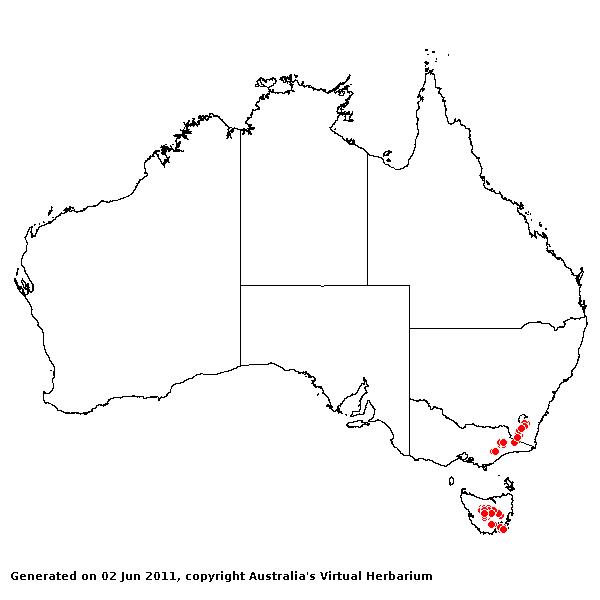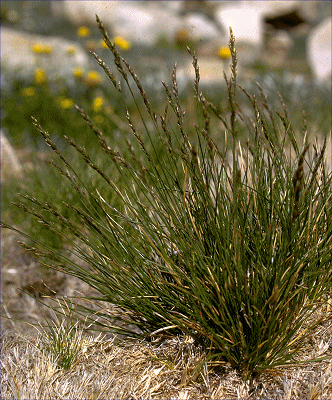Saxipoa saxicola (R. Br) R. Soreng, L.J. Gillespie & S.W.L. Jacobs, Austral. Syst. Bot. 22(6): 407, f. 1C, 3. (2009).
Classification. (GPWG 2001) : Subfamily Pooideae.
Tribe Poeae.
Basionym and/or
Replacement Name: Poa saxicola R.
Br., Prodr. 180 (1810).
Type of Basionym or
Protologue Information: HT: Brown 6286, Mar 1804, Australia:
Tasmania: Table Mountain (i.e. Mt. Wellington) (BM).
Key references
(books and floras): [1878] G.Bentham, Flora Australiensis 7 (654) as Poa ,
[2002] D.Sharp & B.K.Simon, AusGrass, Grasses of Australia, as Poa [2008]
S.W.L.Jacobs, R.D.B.Walley & D.J.B.Wheeler, Grasses of New South Wales
(354) as Poa , [2009] A.Wilson (ed.). Flora of Australia, Vol 44A. Poaceae 2
(337) as Poa .
Illustrations:
[2008] S.W.L.Jacobs, R.D.B.Whalley & D.J.B.Wheeler, Grasses of New South
Wales,4th edn (354), as Poa .
Habit.
Perennial. Culms erect, 13–105 cm tall, 1–2 -noded. Lateral branches simple.
Leaves mostly basal. Leaf-sheaths smooth or scaberulous, glabrous on surface.
Ligule an eciliate membrane or a fringed membrane, a ciliolate membrane,
0.9–4.5 mm long, abaxially glabrous or abaxially scaberulous or abaxially
hairy, erose, truncate or obtuse or acute or acuminate. Leaf-blades straight or
curved, flat or conduplicate, 4–25 cm long, 2–5 mm wide. Leaf-blade surface
smooth or scabrous.
Inflorescence.
Inflorescence compound, a panicle. Panicle linear, 4.5–15 cm long.
Spikelets.
Spikelets pedicelled. Fertile spikelets many flowered, with at least 2 fertile
florets (2–4), comprising 2–4 fertile floret(s), with diminished florets at the
apex, elliptic, laterally compressed, 4.5–7 mm long.
Glumes. Glumes
similar. Lower glume ovate, membranous, keeled, 1-keeled, 3(–5) -nerved. Upper
glume ovate, 4.3–6 mm long, membranous, keeled, 1-keeled, 3(–5) -nerved.
Florets. Fertile
lemma 3.8–5.5 mm long, keeled, 5–7 -nerved. Lodicules present. Anthers 3. Grain
2–2.5 mm long.
Continental
Distribution: Australasia.
Australian
Distribution: New South Wales, Victoria, Tasmania.
New South Wales:
Southern Tablelands. Victoria: Snowfields. Tasmania: West Coast,
Central Highlands, Mt Field, Mt Wellington.
Notes.
Unusual in the genus with the midnerve of the lemma extended as a mucro or
short awn to 0.5 mm long.
Endemic.
From the W coast, Central Highlands, Mt Field and Mt. Wellington in Tas., rare
in the Australian Alps, Vic., S from the Brindabella Ra., N.S.W., and on
Bimberi Ra., A.C.T. Usually in rocky subalpine meadows, herbfields and eucalypt
woodlands from 700–1500 m. Flowers Nov.-Mar. Fruits Feb.-Mar.



